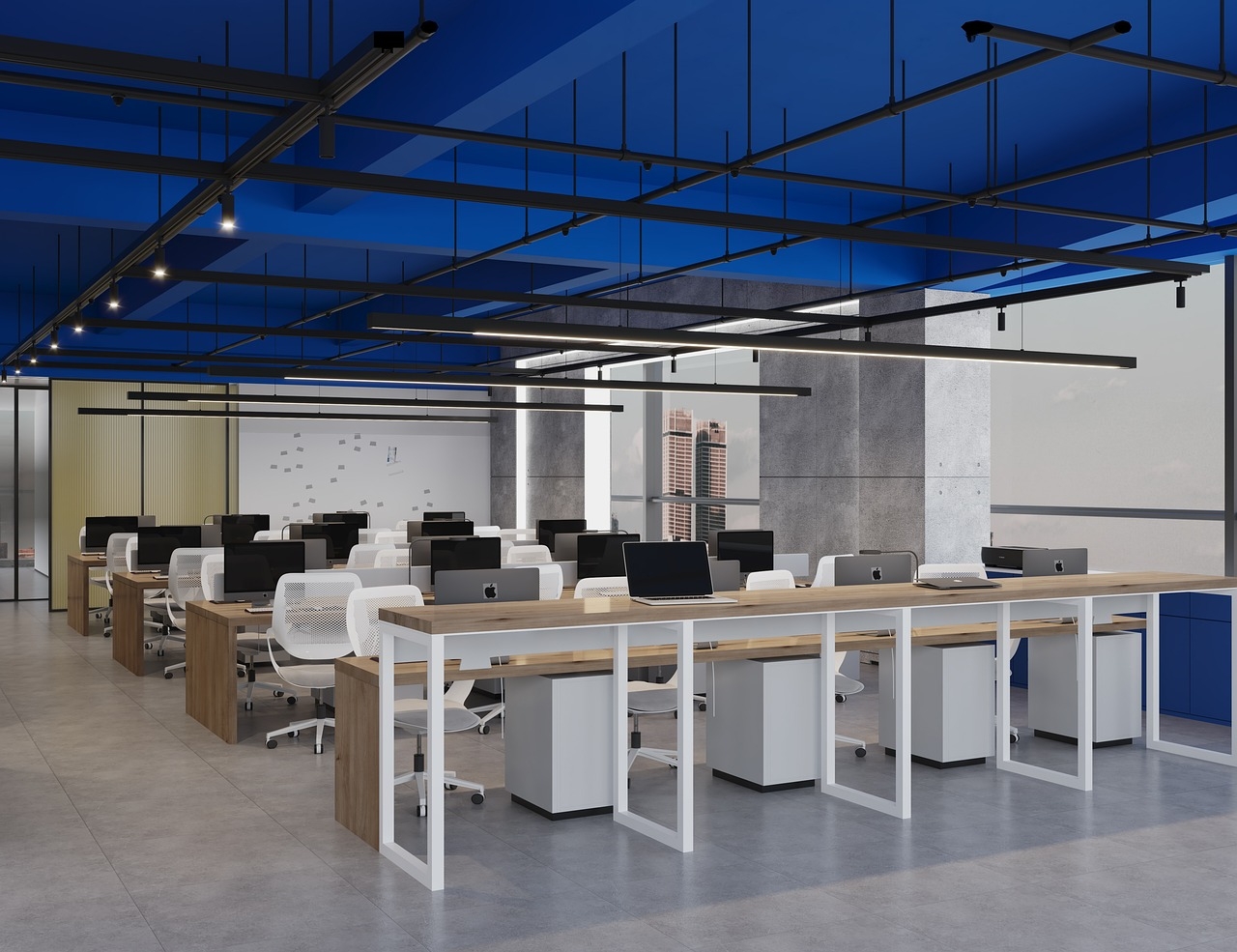The Role of Data Analytics in Optimizing Office Layouts

The landscape of workplaces is changing. The hybrid or remote work models have especially introduced revolutionary approaches to how business complements real estate or office spaces. Your office interior designer can implement data analytics into the workplace to accommodate these practical changes. The purpose of data analytics in optimizing office layouts is to ensure that businesses get most of their workspaces.
A series of analytics tools can help implement the hybrid work environment spaces. For that, decision-makers should adopt flexible approaches to accessing data sources about their workspaces and how coworkers are using them. Businesses can make data-driven decisions regarding office layouts only with the help of workforce data analysis.
How is Workplace Data Analytics Essential in Office Place?
Workplace data analytics is a catch-all process. It includes gathering, synthesizing, and analyzing data from multiple sources. Before an office interior designer begins optimizing office layouts, there is a larger process of examining and interpreting the data. To extract information from raw data, various statistical and computational techniques are applied.
It is a necessary part of workplace strategy. For modern hybrid offices, leaders make informed decisions regarding the usage of resources and spaces. Analytics is crucial because it helps clarify strategic space management. The ultimate aim of workplace data analytics is to improve the workers' experience within the assigned co-working spaces.
Insights from Workplace Analytics
There is a lot of data analytics software available that helps in sharing meaningful office place analytics. Such in-depth, accurate insights help companies to eliminate unnecessary resources and add those tools to maximize efficiency, employee well-being, and productivity. The data pattern of such software can track-
● The work patterns of the employee: This also means the accurate time employees gather at the workplace.
● Total office desks engaged for the day: Based on such data, employers can manage the office space. You can even alter the layout and design of the office.
● Office Space Optimization: It simply means to allow adequate space for every department and employee. No single floor of the building should be crowded or left unattended.
● Popular Workplaces for Employees: Data analytics also helps track the most popular workplaces among employees. The decision maker can figure out the reasons for such popularity and accordingly adjust the least favorite workplace spaces.
A company uses various check-ins and booking systems to track as well as analyze data. Check-in possibilities like QR codes, NFC, or any booking device can trace the accurate data related to an employee's presence in the office. There are anonymous devices like occupancy sensors used by companies for fetching accurate data.
Role of Data Analytics in Workplace Spaces
There are many reasons why companies collect, track as well as analyze data before optimizing the office layouts.
● Analytics Helps in Optimizing the Costs
The understanding of data through analytics aids in planning and executing long-term decisions. When companies can access data, they can adopt strategic perspectives on cost reduction and implementation. In addition to that, when a company can have office occupancy metrics they make decisions in line with the long-term goals of the organization. Such data-driven metrics strive to avoid multiple meetings and over or under-usage of office spaces.
● Well Being of Employees with Data-Driven Decisions
Workplace analytics critically reflects on employee working patterns. This data helps businesses know when and where the employees prefer working the most. Such patterns further assist firms in adjusting different working times and adopting the likable features of popular spaces to other office locations.
For example, if employees prefer spacious and windy rooms, the company can adjust other office locations according to their preferences. Such employee decisions further boost work productivity.
● Simplifying the Workplace Space Utilization
By observing the best and worst performing co-working spaces, a startup firm can depict how better to use the underperforming office spaces. Even unused conference or meeting rooms can be repurposed for other kinds of areas. By exploring space booking software, your company can track reservations and release unoccupied spaces available for others to use.
● Flexibility in Office Data
Through data analytics, businesses can sort out data according to relevance, accuracy, and reliability. With the assistance of easy-to-use metrics, such robust workplace data is configured. Such metrics are analyzed flexibly based on customizations as per daily, weekly, or monthly occupancy. Employers can evaluate the meeting room usage, density of meetings, demand for office desks, etc. The data gathered from multiple sources can easily provide meaningful insights with the company’s integrated software.
● Prepares for a Dynamic Workplace
The work industry is increasingly becoming dynamic today. Using data analytics, companies better adapt to fast-paced workplace changes. It helps to opt for the virtual or hybrid models of working. This workforce data saves costs and time and increases the employees' productivity and well-being.
Wrapping it up
Along with the continuous evolution of workplaces, data analytics is also playing a crucial role in harnessing the potential of employees and workspaces. The office interior designer must incorporate data analytics strategies in optimizing the office layouts and appropriate space usage. On a larger level, making data-driven decisions also contributes to the idea of sustainability. Companies utilize spaces rationally and save costs and resources without compromising the employee's well-being.
- Industry
- Art
- Causes
- Crafts
- Dance
- Drinks
- Film
- Fitness
- Food
- Games
- Gardening
- Health
- Home
- Literature
- Music
- Networking
- Other
- Party
- Religion
- Shopping
- Sports
- Theater
- Wellness
- News


